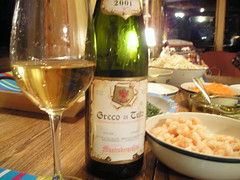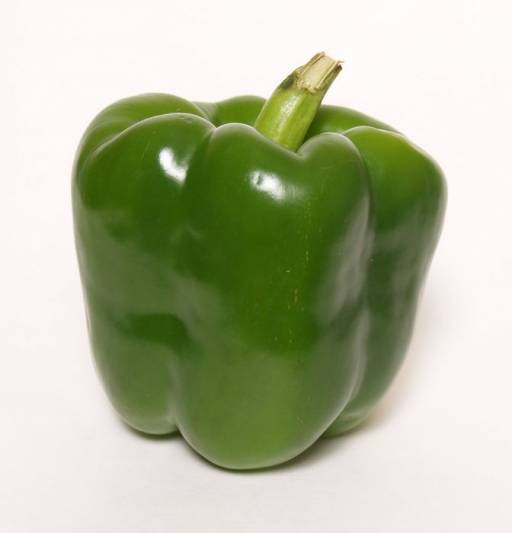 The white wine apologist
The white wine apologistPerhaps it’s because winter has decided to get nasty that I am feeling rambunctious. I will not take this lying down, Old Winter Man! Throw your ten feet of snow at me, let the thermometer outside my window drop 2 feet below the freezing line. I don’t care. I will still play outside, I will turn your snowy evenings into romantic couch and fireplace parties, and I will, despite you, continue to drink white wine.
I am a fanatical white wine drinker and I while I’ll admit that I do tend to drink more red in the winter, for me that means it is an even split- half red, half white. But I am rare, and I feel marginalized.
Many wine drinkers seem to look upon drinking white wine as a chore. When I work as a sommelier, I can’t tell you the number of times that I have pleaded with clients to at least give white wine a try. “It’s a scallop, sir, they taste of nothing,” I would say as I tried to explain why his adoration of Australian shiraz does not necessarily make it the right wine for this occasion. I could understand if it were chicken, or veal. There you have options, you could go either way. But scallops and other seafood require a different approach, something a red wine simply wasn’t made to do. I mean, both hammers and screwdrivers are useful tools, but hardly interchangeable. It’s the same thing for wine.
And I guess that’s my point. I look at wines as if they were tools, accessories to what’s sitting on your plate. While I have a penchant for white wine, I have no problem drinking red. I don’t really care. I am non-partisan, every wine has it’s time. The only thing I can say in favour of whites over reds is that most of my most memorable bottles have been white wines. And when I have served people in a restaurant, it’s often the pairings with white wines that have turned people on the most. Am I better working with white wines? Maybe, but a white wine’s subtler flavours combined with it’s higher acidity tends to integrate better with foods, and allows for more of the nuances of a well constructed recipe to show themselves.
But why am I talking about white wine now? I can hear some of you murmuring out there, “take a look outside Bill, aren’t things already white enough for you!” Exactly my point. If having to coerce people into drinking white wine by guilting them into some sort of obligation to the wine and food pairing gods- if that bums me out- then listening to people relegate them to cocktail parties and pool-sides on hot summer days pushes me over the edge. White wines can be more, so much more.
You can’t hate what you don’t know
A couple of summer’s ago, I put together two tasting menus at the restaurant where I was working as a sommelier. The clients had a choice- 5 different glasses of white or 5 reds. There was no substitution, no mix and matching. Well, despite that the split in wine consumption in Quebec is roughly 70-30 in favour of red wines, more than 60% of the clients chose the white menu.
While a few mentioned that they chose white because it was summer, the number one reason was that most people said that they simply don’t know white wines, and it had been years since they had drunk them. My theory is that most people started drinking wine with whites, and usually cheap bottles. We all remember those head-ache inducing, sweet, depanneur-purchased Liefraumilch. But as they started to buy more expensive bottles, for some reason they went red and all that most people remember about white wines are the headaches. Even the most experienced wine drinkers, who can speak volumes about their favourite reds, often have a tough time talking about white.
Versatility
I can tell you that putting together that white menu was far easier than the red. Why? The range in styles in white wines is far greater than reds. While red wines move between less tannic to more tannic, less fruity to more fruity, white wines can be so many different things. From high acid to rich and buttery, delicate and floral to nutty and spicey, completely dry to very sweet, still to bubbly.
This translates into more options at the dinner table. Aside from certain meats, either strongly flavoured game or very fatty cuts, there is always a white wine for the job. Seafood and most fish are obviously the domain of whites. Even the most subtle red tends to overpower these delicately flavoured dishes. And in terms of the type of flavours to harmonize with seafood, think of what almost always accompanies these plates - a wedge of lemon. Red wines are built along darker fruits or earthy notes, while white wines often have citrus flavours.
Buy beyond the seafood stuff, which even the most hardened red wine drinker will agree to drink a white wine, there are many other dishes which work as well, or better with white. Last week I talked about cheese, and how the salt in cheese can turn red wines bitter will amplifying the fruit in white. I know many people who are cooking more and more with Asian spices. Coriander, mint, cumin - all these spices work better with the more aromatic whites. And with mouth burning chile peppers? A slightly sweet wine will appease the nastiest habanero that you can find.
Then there are the white meats. When I choose a wine, I look at the sauce. Darker sauces will mean that I will choose a red, but if I am cooking with herbs, cheeses or cream sauces, I like white. A classic pork roast, served with apple compote is a natural with a rich chardonnay that often has the same apple flavours. Guinea Hen, and other slightly stronger tasting fowl is a natural mix with the nutty whites of the Jura.
And it doesn’t stop there. One of my favourite pairing tricks is white wine and steak tartar - nothing matches up like a honey-textured white. Great tartar is rich, spicy but subdued. White wines made with grapes like roussanne, grenache blanc or an aged chenin blanc combine richness with freshness, and display certain fruit overtures like browning apples and figs that seems to add more to the dish than a red, and make a better harmony in terms of texture.
Breaking down the prejudice
Now I am not suggesting that you should stop drinking red in favour of whites. All I am asking is that you give white a chance. When they are obviously the appropriate choice, drink white rather than red. Get to know and understand them, much like many of you gleefully explore the world of red wines. So as a start, let’s break down certain misguided myths about white wines.
myth: White wine should be served cold.
reality: Most whites should be served between 8C-12C to maximize its flavour and texture.
myth: White wines are wimpy, tasteless wines that are only good as a pre-dinner drink.
reality: White wines can be as complex, and at times more powerful than reds.
myth: White wines are acid and give you heartburn.
reality: While whites do have a touch more acidity, if you are sensitive to acidity there are a whole host of whites that have less total acidity than red wines.
myth: White wines don’t age
reality: My cellar is packed with white wines. While they tend to age faster than red wines, to fully appreciate most whites requires that they, like reds, spend a little time in a cool dark place.
myth: White wines give you headaches.
reality: While white wines usually have more sulphites than red wines, unless you are part of the under 1% of the population that is sensitive to sulphites, you have more of a chance to get a headache from the histamines in red wines.
 Birthday Meal
Birthday Meal









